Once again: Hipu vai at Gb2-27
has a π (=
22 / 7) position in the text and 4 days later
followed the
beginning of the birth (hanau) of
the new year, when
the Sun would arrive at the Pegasus Square.
In rongorongo times this happened in day
64 (March 5) and not as anciently in
midwinter close to the end of the solstice period.
Due to the precession of
the equinoxes the stars had advanced 64
days since the time of the Hyades Gate,
whereas at the time of Gregory XIII the
precession would have pushed them ahead
with only 60 days and the Sun would have
reached the Pegasus Square already in
°March 1.
When Old Sun reached
λ Aquarii -
where the ecliptic crossed under the flow of
water from the Urn of Aquarius - he was
finished (fire cannot survive in water)
and his head was 'covered by the black
cloth'. Chattering birds become silent
when a black cloth is thrown over their
cage.
 |
 |
 |
|
 |
 |
|
Gb2-27 |
Gb2-28 (54) |
Gb2-29 |
Gb2-30 (285) |
Gb2-31 |
|
DECEMBER
28 |
29 |
30 (364) |
31 |
JANUARY 1 |
|
ι Cephei (346.0),
λ Aquarii,
γ Piscis Austrini, σ Pegasi (346.5) |
Scheat Aquarii (347.0), ρ Pegasi
(347.2), δ Piscis Austrini
(347.4),
Fomalhaut,
τ Gruis (347.8) |
Fum al Samakah
(348.3), ζ Gruis (348.5),
ο Andromedae
(348.9) |
Al Fargh al Mukdim-24 /
Purva Bhādrapadā-26 /
House-13 |
23h (350.0) |
|
Scheat
Pegasi,
π Piscis Austrini (349.3), κ
Gruis (349.4),
MARKAB
PEGASI
(349.5) |
υ, θ Gruis (350.0), π Cephei
(350.6), ι Gruis (350.9) |
|
March 2 (61) |
3 |
4
(428) |
5 |
6 |
|
°February 26 |
27 (58) |
28 |
°March 1 (425) |
2 |
|
'February
3 |
4
(400) |
5 (36) |
6 |
7 |
|
"January
20 |
21 |
22 |
23 (388) |
24 |
|
NAKSHATRA DATES: |
|
JUNE
29 |
30 |
JULY 1 (182) |
|
2 |
3 |
|
no star listed (164)
Altair |
Wings-27 |
ANA-TIPU |
11h (167.4) |
Al Sharas (168.6) |
|
ALKES
(165.6) |
Merak (166.2),
DUBHE
(166.7) |
χ¹ Hydrae (167.1), χ² Hydrae
(167.3) |
|
September 1 |
2 |
3 |
4 |
5 (248) |
|
°August
28 |
29 |
30 (242) |
31 |
°September 1 |
|
'August
5 |
6 |
7 |
8 (220) |
9 |
|
7-22 |
"July
23 |
24 |
25 |
26 (207) |
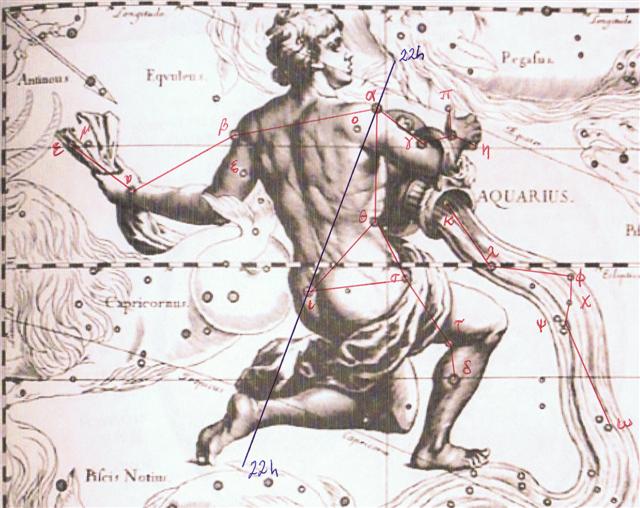
|
Egyptian
menchet |
 |
Phoenician
lamedh |
 |
Greek
lambda |
Λ
(λ) |
|
... Wikipedia has no information
regarding the origin of the
Phoenician lamedh, but
the Egyptian 'cloth' hieroglyph
(menchet) is - I suggest
- related to the 4 upside down
sky pillars. I.e. the basic
element of the 'covering'
hieroglyph could have indicated
darkness:
 |
...
When the man,
Ulu, returned to his wife from
his visit to the temple at Puueo,
he said, 'I have heard the voice of
the noble Mo'o, and he has
told me that tonight, as soon as
darkness draws over the sea and the
fires of the volcano goddess,
Pele, light the clouds over the
crater of Mount
Kilauea, the black cloth will
cover my head. And when the breath
has gone from my body and my spirit
has departed to the realms of the
dead, you are to bury my head
carefully near our spring of running
water. Plant my heart and entrails
near the door of the house. My feet,
legs, and arms, hide in the same
manner. Then lie down upon the couch
where the two of us have reposed so
often, listen carefully throughout
the night, and do not go forth
before the sun has reddened the
morning sky. If, in the silence of
the night, you should hear noises as
of falling leaves and flowers, and
afterward as of heavy fruit dropping
to the ground, you will know that my
prayer has been granted: the life of
our little boy will be saved.' And
having said that, Ulu fell on
his face and died
...
The not yet fully formed figure
(with a tiny dot) in
Gb2-32 is 58 (= 2 * 29) days from the
beginning of side b and the following
completed creature, a rising fish, was at a position
similar to February 28 (59). March 1
could then be imagined at the potent
takaure in Gb2-34 (where 234 = 13 *
18). This was a week after
λ Aquarii
and here the Sun reached Kerb (τ Pegasi,
the Bucket Rope):
 |
 |
 |
 |
 |
|
Gb2-32
(58) |
Gb2-33 |
Gb2-34 |
Gb2-35 |
Gb3-1 (291) |
|
JANUARY 2 |
3 |
4 |
5 |
6 |
|
Simmah (351.7) |
φ Aquarii (352.0), ψ Aquarii
(352.4), χ Aquarii (352.6), γ
Tucanae, φ Gruis (352.8) |
ο Cephei (353.3),
Kerb
(353.6) |
κ Piscium (354.2), θ Piscium
(354.4),
υ Pegasi
(354.9) |
ο Gruis, Snowball Nebula (355.0) |
|
March
7 |
8 (432) |
9 |
10 |
11 (70) |
|
'February
8 |
9 (40) |
10 |
11 |
12 (408) |
|
"January
25 |
26 (391) |
27 |
28 |
29 (*314) |
|
NAKSHATRA DATES: |
|
JULY
4 |
5 (186) |
6 |
7 |
8 |
|
Al Zubrah-9
/
Purva Phalguni-11 |
φ
Leonis (170.0), Alula (170.5),
Labrum (170.6) |
σ
Leonis (171.1), λ Crateris
(171.6), ι Leonis, ε Crateris
(171.9) |
γ
Crateris, π Centauri (172.0), κ
Crateris (172.5), τ Leonis
(172.8)
Gredi
|
ο¹ Centauri (173.8) |
|
Zosma
(169.2),
COXA (169.4) |
|
September 6 |
7 (250) |
8 |
9 |
10 |
|
'August
10 (222) |
11 |
12 (*144) |
13 |
14 |
|
"July 27 |
28 |
29 (210) |
30 |
31 |

But where 8 * 29½ = 236
should have been in the text there is instead
a new glyph line with a
great new takaure (at the last
Greek lettered star in the Crane - Grus
-
constellation). At the
time of Bharani this was 314 days after
0h. At the time of the Hyades Gate it
was day 372 (= 12 * 32) counted from
DECEMBER 31. In Roman times it was day
408 (= 17 * 24) counted from the
previous 'January 1.
And in rongorongo times it was day 12 * 29½
+ 1 counted from 0h - as if quickly
having been determined from inheriting
and transposing the ancient December solstice number
(355) to a position 64 days later in the
calendar.
The 'horse spirit' (takaure) of
the new year had initially been immersed in water (Gb3-5)
and the new Sun cycle could not begin to be
counted - the cycle was still as if chained (catenata) to a rock
-
until star night number 14 * 29½ = 413
was in the past. I.e. not until
day 361 (= 19 * 19) counted from 0h, at Gb3-7
where the Sun reached
φ Pegasi:
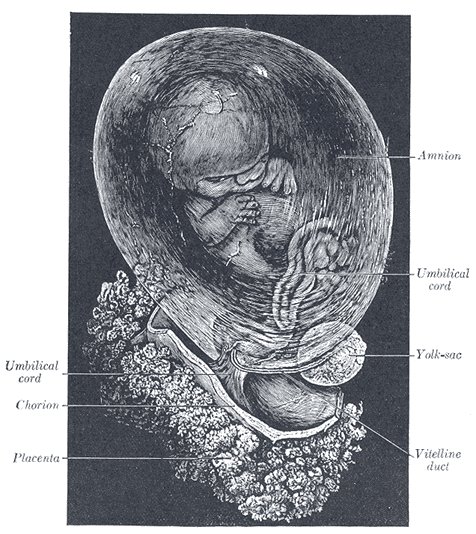
 |
 |
 |
 |
 |
|
Gb3-2 |
Gb3-3 (64) |
Gb3-4 |
Gb3-5 (295) |
Gb3-6 |
|
JANUARY
7 |
8 |
9 |
10 |
11 |
|
no star listed (356) |
ι Phoenicis (357.3), ι Piscium
(357.4), λ Andromedae (357.9) |
λ Piscium (358.0),
Manus Catenata
(358.1), Alrai, θ Phoenicis
(358.4), κ Andromedae (358.7) |
ω Aquarii
(359.2),
78 Pegasi
(359.5) |
ψ Andromedae (360.1), σ
Phoenicis (360.4) |
|
March
12 |
13 (72) |
π |
15 |
16 (440) |
|
'February
13 |
2-14 (45) |
15 (*331) |
16 |
17 (413) |
|
"January
30 |
31 |
"February 1 |
2 (33) |
3 (399) |
|
NAKSHATRA DATES: |
|
JULY
9 |
10 (*111) |
11 |
12 (193) |
13 |
|
ξ
Hydrae (174.3), ο² Centauri, λ
Centauri (174.8) |
θ
Crateris (175.0), υ Leonis
(175.2), ω Virginis (175.3), ι
Crateris (175.5) |
ο
Hydrae (176.1) |
ζ
Crateris, ξ Virginis (177.0), λ
Muscae (177.1), ν Virginis
(177.2), μ Muscae (177.8) |
Al Sarfah-10 /
Uttara Phalguni-12 /
Zibbat A.-17
/
Shēpu-arkū sha-A.-18 |
|
93 Leonis
(178.0),
DENEBOLA (178.3), Alaraph
(178.6) |
|
September
11 |
12 (*175) |
13 (256) |
14 |
15 |
|
'August
15 |
16 (*148) |
17 (229) |
18 |
19 |
|
"August
1 |
2 |
3 (*135) |
4
(216) |
5 |
... Nut, whom the Greeks sometimes
identified with Rhea, was goddess of the
sky, but it was debatable if in
historical times she was the object of a
genuine cult. She was Geb's twin sister
and, it was said, married him secretly
and against the will of Ra. Angered, Ra
had the couple brutally separated by Shu
and afterwards decreed that Nut could
not bear a child in any given month of
any year. Thoth, Plutarch tells us,
happily had pity on her. Playing
draughts with the Moon, he won in the
course of several games a seventy-second
part of the Moon's light with which he
composed five new days.
As these five intercalated days did not
belong to the official Egyptian calendar
of three hundred and sixty days, Nut was
thus able to give birth successively to
five children: Osiris, Haroeris (Horus),
Set, Isis and Nepthys ...
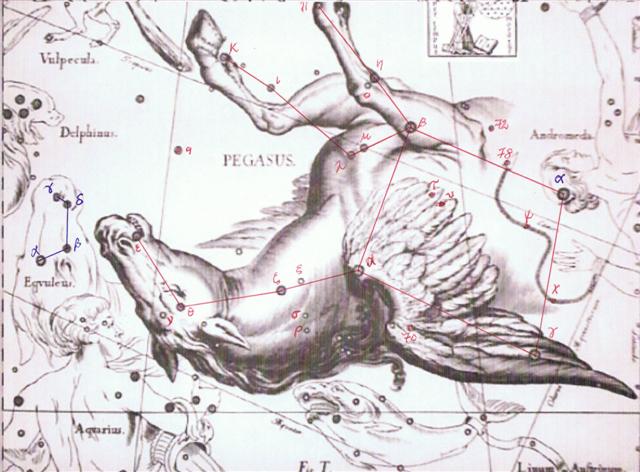
Hevelius has not
indicated the position of
φ
Pegasi, but it should be in the shadowy
triangular form (Δ) where the right wing
of Pegasus divides its feathers.
|
Egyptian
door |
 |
Phoenician
dalet |
 |
Greek
delta |
Δ (δ) |
... Delta
(uppercase Δ,
lowercase δ) ...
is the fourth
letter of the
Greek alphabet.
In the system of
Greek numerals
it has a value
of 4. It was
derived from the
Phoenician
letter Dalet.
Letters that
come from delta
include Latin D
and Cyrillic Д.
A river delta
(originally, the
Nile River
delta) is so
named because
its shape
approximates the
upper-case
letter delta
(the shape is a
triangle) ...
Dalet (dāleth,
also spelled
Daleth or
Daled) is
the fourth
letter of many
Semitic
alphabets ...
The letter is
based on a glyph
of the Middle
Bronze Age
alphabets,
probably called
dalt
'door' (door in
Modern Hebrew is
delet),
ultimately based
on a hieroglyph
depicting a
door.

|
|
Egyptian
bread,
(-t,
female
determinant) |
 |
Phoenician
qoph |
 |
Greek
phi |
Φ(φ) |
|
...
is
the
21st
letter
of
the
Greek
alphabet
...
Its
origin
is
uncertain
but
it
may
be
that
phi
originated
as
the
letter
qoppa
...
In
traditional
Greek
numerals,
phi
has
a
value
of
500
or
500000
...
Isaac
Taylor,
History
of
the
Alphabet:
Semitic
Alphabets,
Part
1,
2003:
'The
old
explanation,
which
has
again
been
revived
by
Halévy,
is
that
it
denotes
an
'ape,'
the
character
Q
being
taken
to
represent
an
ape
with
its
tail
hanging
down.
It
may
also
be
referred
to a
Talmudic
root
which
would
signify
an
'aperture'
of
some
kind,
as
the
'eye
of a
needle,'
...
Lenormant
adopts
the
more
usual
explanation
that
the
word
means
a
'knot'
...
...
The
king,
wearing
now
a
short,
stiff
archaic
mantle,
walks
in a
grave
and
stately
manner
to
the
sanctuary
of
the
wolf-god
Upwaut,
the
'Opener
of
the
Way',
where
he
anoints
the
sacred
standard
and,
preceded
by
this,
marches
to
the
palace
chapel,
into
which
he
disappears.
A
period
of
time
elapses
during
which
the
pharaoh
is
no
longer
manifest.
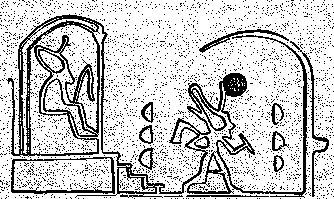
When
he
reappears
he
is
clothed
as
in
the
Narmer
palette,
wearing
the
kilt
with
Hathor
belt
and
bull's
tail
attatched.
In
his
right
hand
he
holds
the
flail
scepter
and
in
his
left,
instead
of
the
usual
crook
of
the
Good
Shepherd,
an
object
resembling
a
small
scroll,
called
the
Will,
the
House
Document,
or
Secret
of
the
Two
Partners,
which
he
exhibits
in
triumph,
proclaiming
to
all
in
attendance
that
it
was
given
him
by
his
dead
father
Osiris,
in
the
presence
of
the
earth-god
Geb.
'I
have
run',
he
cries,
'holding
the
Secret
of
the
Two
Partners,
the
Will
that
my
father
has
given
me
before
Geb.
I
have
passed
through
the
land
and
touched
the
four
sides
of
it.
I
traverse
it
as I
desire.'
... |
However, the heliacal
stars of day 361 as counted from 0h at the time of
Gregory XIII came 4 days later than in rongorongo
times, viz. at glyph 72:
 |
 |
 |
|
 |
 |
 |
|
Gb3-11
(72) |
Gb3-12 |
Gb3-13 |
Gb3-14 |
Gb3-15 |
Gb3-16 (306) |
|
JANUARY
16 |
17 |
18 |
19 (384) |
20 |
21 |
|
Al
Fargh al Thāni-25 |
Uttara Bhādrapadā-27
/
Wall-14 |
χ Pegasi (2.1), θ Andromedae
(2.7) |
σ Andromedae (3.0), ζ Tucanae
(3.5), ρ Andromedae, π Tucanae
(3.7) |
no star listed (4) |
Ankaa,
κ Phoenicis
(5.0)
Alphard |
|
0h (365.25) |
|
Caph,
SIRRAH
(0.5), ε Phoenicis (0.8) |
ALGENIB
PEGASI
(1.8) |
|
March
21 (0h) |
22 |
23 |
24 |
Equinox (84) |
26 (450) |
|
°March 17 (*361) |
18 |
19 |
20 |
21 (0h) |
22 |
|
'February 22 |
Terminalia |
Bissextum |
25 (*341) |
26 (422) |
27 (58) |
|
"February
8 |
9 (40) |
10 (*326) |
11 |
12 (408) |
13 |
|
NAKSHATRA DATES: |
|
JULY
18 |
19 (200) |
20 (*121) |
|
21 |
22-7 |
23 |
|
Alchita,
Ma Wei (183.1),
Minkar
(183.7), ρ Centauri (183.9) |
Pálida (184.6), Megrez (184.9) |
Hasta-13 /
Chariot-28 |
Chang Sha
(186.3) |
Intrometida (187.4),
Acrux
(187.5) |
γ
Com. Berenicis (188.0), σ
Centauri (188.1),
Algorab
(188.5), Gacrux (188.7)
|
|
GIENAH
(185.1), ε Muscae (185.2), ζ
Crucis (185.4),
Zaniah
(185.9) |
|
September
20 |
21 |
Equinox (265) |
23 |
24 |
25 |
|
°September 16 |
17 (*182) |
18 |
19 |
20 |
21 (*184) |
|
'August
24 (236) |
25 (*157) |
26 |
27 |
28 |
29 |
|
"August
10 (222) |
11 |
12 (*144) |
13 |
14 |
15 |
Close to the Full Moon
- and possibly illustrated in Rogo
(Gb3-15)
as a sign south of his midline, his
equator - was Porrima (γ
Virginis), a star name which for the ear of a
Polynesian could have sounded as 'the
night (po) which is the 5th (rima)'.
South of the equator spring equinox
arrived more than 365¼
/ 2 days after the northern spring equinox, which might explain the
traditional date March 25 for the
northern spring equinox - if it had been
determined via the nakshatra method.

 |
 |
 |
|
Gb3-17 |
Gb3-18 (308) |
Gb3-19 (80) |
|
JANUARY
22 |
23 (388) |
24 |
|
λ Phoenicis (6.3), β
Tucanae (6.4) |
Andromeda Galaxy,
π Andromedae
(7.7) |
ε Andromedae
(8.2),
Delta
(8.4), Schedir (8.6),
ζ Andromedae,
μ Phoenicis (8.9) |
|
March
27 |
28 (452) |
29 (88) |
|
°March 23 |
24 (448) |
25 (84) |
|
'February 28 |
'March 1 (425) |
2 (61) |
|
"February
14 (2-14) |
15 (46) |
16 (*332) |
|
NAKSHATRA DATES: |
|
JULY
24 |
25 (206) |
26 (*127) |
|
γ Muscae (189.0),
Avis
Satyra (189.3),
Asterion (189.5),
Kraz (189.7) |
α Muscae (190.2), τ
Centauri (190.5), χ
Virginis (190.7)
Alderamin |
Al Áwwā'-11 /
Shur-mahrū-shirū-19 |
|
Sombrero Galaxy (191.1),
ρ Virginis (191.4),
PORRIMA, γ
Centauri (191.5) |
|
September
26 |
27 (270) |
28 |
|
°September 22 (*185) |
23 |
24 |
|
'August
30 (242) |
31 |
'September 1 (*164) |
|
"August
16 (*148) |
17 |
18 (230) |
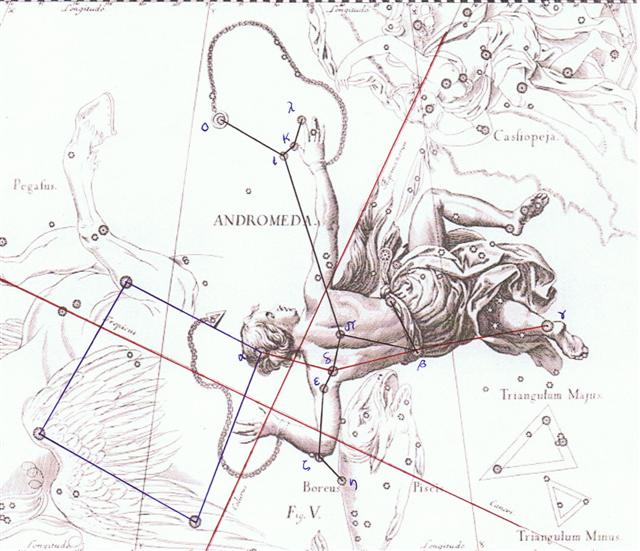
Which in turn might
imply counting from Gb3-14 (π).
Because the 5 days
from °March 21 - as counted
beyond
Gb3-14 - could refer to the
back side of the day (like
the 365 / 72 nights granted
Nut for giving birth). There is a Moon
crescent at the back of the
head in Gb3-19 as if
indicating where her extra
nights were ending.
The 19th Babylonian
ecliptic station was ruled
by Porrima. Rima meant
not only 5 but also hand,
and Shur-mahrū-shirū
has tentatively been translated
as West (or Front) Shur,
possibly with an idea of a
'grasping hand' at the
horizon in the west.
...
for the West we have Manik-Kin,
exactly
corresponding to the
term Chikin,
the biting or eating
of the Sun, seizing
it in the mouth
...
... When they arrived at the place
where Hine nui lay asleep
with her legs apart and they could
see those flints that were set
between her thighs, Maui said
to his companions: 'Now, my little
friends, when you see me crawl into
the body of this old chieftainess,
whatever you do, do not laugh. When
I have passed right through her and
am coming out of her mouth, then you
can laugh if you want to. But not
until then, whatever you do.' His
friends twittered and fluttered
about him and flew in his way. 'O
sir', they cried, 'you will be
killed if you go in there.' 'No',
said Maui, holding up his
enchanted jawbone. 'I shall not -
unless you spoil it. She is asleep
now. If you start laughing as soon
as I cross the threshold, you will
wake her up, and she will certainly
kill me at once. But if you can keep
quiet until I am on the point of
coming out, I shall live and Hine
nui will die, and men will live
thereafter for as long as they
wish.' So his friends moved out of
his way. 'Go on in then, brave
Maui', they said, 'but do take
care of yourself'
...
Sarcophagus
means 'eating meat'.
Maybe the
reading should somewhere here shift
from the front side of the
day to the nakshatra side,
because when north of the
equator it was spring it was
the opposite on Easter
Island. Manu rere in
Gb3-14 is in a poor shape and
has no eye. Hanau in
Gb3-18 has a powerful eating
arm but 'south of the
equator' there are no toes
and only a joke for a penis.
At this time of the year the Raven ruled
the Sun south of the
equator.
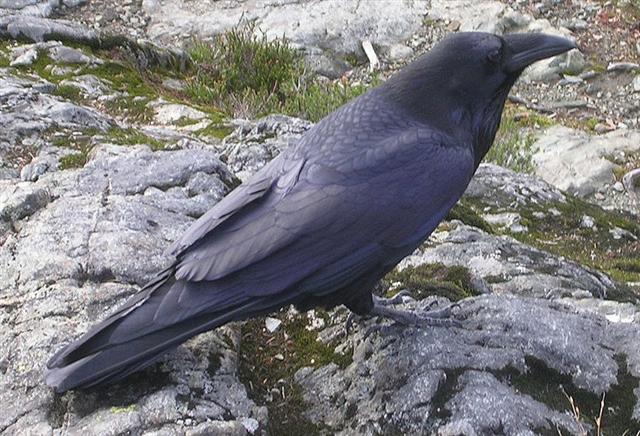
... Ravens, unlike geese,
loons and many other birds,
do not in fact have penises
- a fact recorded and
accounted for in several
ways in Northwest Coast
mythology ...
 |
 |
 |
 |
|
Gb3-20
(310) |
Gb3-21 |
Gb3-22 |
Gb3-23
(84) |
|
JANUARY
25 (390) |
26 |
27 |
28 |
|
ξ Phoenicis (9.0), ρ
Tucanae (9.1), Deneb
Kaitos,
η Phoenicis
(9.4) |
Achird (10.7) |
Legs-15 |
Cih, λ Tucanae
(12.4), μ Andromedae
(12.8) |
|
ν Andromedae (11.0),
ρ Phoenicis (11.2),
η ANDROMEDAE
(11.4) |
|
March
30 |
31 (90) |
April 1 |
2 (457) |
|
'March
3 |
4 (428) |
5 (64) |
6 (*350) |
|
"February
17 |
18 (414) |
19 (50) |
20 (*336) |
|
NAKSHATRA DATES: |
|
JULY
27 (*128) |
28 |
29 (210) |
30 |
|
ι Crucis (192.2), β
Muscae (192.5),
Mimosa (192.9) |
no star listed (193) |
κ Crucis (194.4), ψ
Virginis (194.5), μ
Crucis, λ Crucis
(194.6), Alioth
(194.8) |
Minelauva (195.1),
Cor Caroli (195.3) |
|
September
29 (272) |
30 |
October 1 |
2 |
|
'September 2 (*165) |
3 |
4 |
5 (248) |
|
"August
19 (*151) |
20 |
21 |
22 (234) |
After 9 nights counted from March
21 (0h) another 4 were needed in order
to reach the stars which at the time of
Gregory XIII were at 0h. Gb3-23 has an
'arm' with its thumb (as in
π Aquarii)
changing into hua:
 |
 |
|
hua |
Gb3-23
(84) |
|
Hua
1. Testicle. 2.
Figuratively: son, hua tahi,
only son; fruits of the earth;
to grow well (of fruits). 3. To
cause a fight, a quarrel.
Hua-ai, generation, as
lineage of direct descendents;
contemporaries. Huahua, coccyx of bird, 'parson's nose':
huahua moa, huahua uha.
Huataru, a creeper
(Chenopodium ambiguum).
Vanaga.
1. The same;
ki hua, again, to
continue, to strain, to
struggle, to move, to repeat,
over and above. Mq.: hua,
the same, to return, to
recommence. 2. To bloom, to
sprout; flower, fruit (huaa);
huaa tae oko, huaa
vahio, young fruit; hua
atahi, only son; huahaga,
fruit; mei te huahaga o tokoe
kopu, the fruit of thy body;
tikea huahaga, deceptive
appearance. P Pau.: ua,
to be born; huahaga,
lineage. Mgv.: hua, to
produce (said of trees, grain,
etc.), blooming time of flowers,
abundance of fruit. Mq.: hua,
to produce, to bear fruit. Ta.:
ua, to sprout. Huahua.
1. Tailless fowl. 2. Vein,
tendon, line. 3. Mgv.: huahua,
pimples covering the face. Ta.:
huahua, id. Mq.: hua,
tubercules. Sa.: fuafua,
abscess on hand or feet. Ma.:
huahua, small pimples. Pau.:
Hua-gakau, rupture. Ta.:
áau, entrails. Sa.:
ga'au, id. Ma.: ngakau,
id. Churchill.
1. Fruit. 2.
Egg. 3. Tā
hua = 'genealogical writing'
or 'same writing'. Fischer. |
| |
|
Delta (Δ) |
δ Andromedae |
8.4 |
March 29 (88) |
- |
- |
| |
|
|
η Phoenicis |
9.4 |
March 30 (89) |
- |
- |
|
0 |
- |
Zero |
η Andromedae |
11.4 |
April 1 (91) |
- |
0 |
| |
|
Whip |
Cih (γ Cassiopeiai) |
12.4 |
April 2 (92) |
- |
1 |
|
1 |
Al Sharatain |
Pair of Signs |
β Arietis (Sheratan),
γ (Mesarthim) |
27.4 |
April 17 (107) |
16 |
16 |
|
March equinox |
|
14 |
Wall |
γ Pegasi (Algenib) |
Porcupine |
(1.8) |
Mar 22 (81) |
81 |
|
15 |
Legs |
η Andromedae (?) |
Wolf |
(11.4) |
Apr 1 (91) |
91 = 81
+ 10 |
|
16 |
Bond |
β Arietis (Sheratan) |
Dog |
(27.4) |
Apr 17 (107) |
107 = 91
+ 16 |
|
17 |
Stomach |
4¹ Arietis (Bharani) |
Pheasant |
(41.4) |
May 1 (121) |
121 = 107
+ 14 |
I have not
colour-marked Achird at Gb3-21 (a
number which could allude to March
21) because its fraction position is
not 0.4 as the rest of the Arab
stars for the Sun. However, it has
the Greek letter
η
- like
η Phoenicis and
η Andromedae:
|
Egyptian courtyard |
 |
Phoenician heth |
 |
Greek eta |
Η (η) |
|
...
The letter shape
ultimately goes back
to a hieroglyph for
'courtyard' ...
possibly named
hasir in the
Middle Bronze Age
alphabets, while the
name goes rather
back to
hayt, the
name reconstructed
for a letter derived
from a hieroglyph
for 'thread'
 |
Achird is
η Cassiopeiai (at her
right breast) and the Phoenician
shin is the universally
understood sign for this
constellation:
|
Egyptian
tusk |
 |
Phoenician
shin |
 |
Greek
sigma |
Σ (σ, ς) |
|
Wikipedia:
Shin
(also
spelled
in (īn)
or Sheen)
literally
means
'teeth,
'press', and
'sharp' ...
The Mayan
'grasping
hand' (Chikin)
in the west
was also
called
'the biting
or eating of
the Sun':
... But in
the final
confirmation,
we have the
direct
evidence of
the signs
for East and
West. For
the East we
have the
glyph
Ahau-Kin,
the Lord
Sun, the
Lord of Day;
for the West
we have
Manik-Kin,
exactly
corresponding
to the term
Chikin,
the biting
or eating of
the Sun,
seizing it
in the mouth
... |
... Cassiopeia,
or Cassiope,
more correctly
Cassiepeia,
although variously
written, is one of
the oldest and
popularly best know
of our
constellations, and
her throne, 'the
shinie
Casseioppeia's
chair', of Spencer's
Faerie Queen,
is a familiar object
to the most youthful
observer.
It is also known as
the Celestial W
when below the pole,
and the Celestial
M when above it
...

...
possibly the last letter
in the name Achird was added in
order to indicate a
female. Allen
does not mention
Achird and he has no
other name for η
Cassiopeiae, but I guess
the star could be
connected with α Leonis,
Regulus, once named
Achir (Possessing
Luminous Rays):
'Naturally sharing the
character of its
constellation as the
Domicilium Solia, in
Euphratean astronomy it
was Gus-ba-ra,
the Flame, or the Red
Fire, of the House of
the East; in Khorasmia,
Achir, Possessing
Luminous Rays; and
throughout classical
days the supposed cause
of the summer's heat, a
reputation that it
shared with the Dog-star
...
... That one // White
stain of light, that
single glimmering
yonder, // Is from
Cassiopeia, and therein
// Is Jupiter ...
The
ancient idea of a
'courtyard' (Η)
- or 'vestibule' - was
possibly referring to
the Pegasus Square, with
η Pegasi (Matar - from
Al Sad al Matar,
the Fortunate Rain)
as of
special importance:
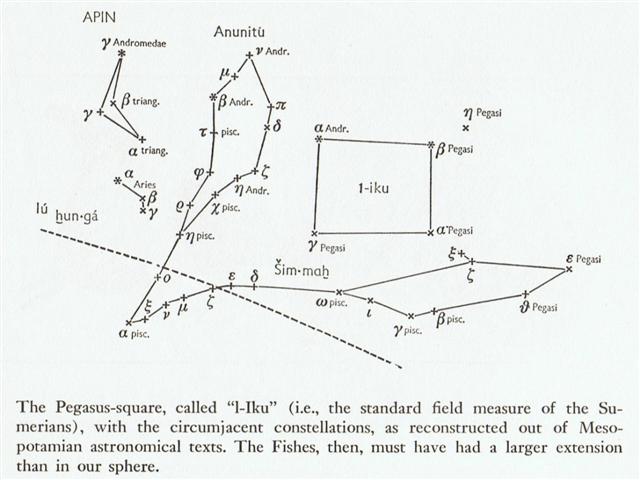
At the
time of the Hyades Gate Old Sun was at Matar (and
η Gruis) in day 360
(DECEMBER 26):
 |
 |
 |
 |
 |
 |
|
Gb2-21 |
Gb2-22 |
Gb2-23 |
Gb2-24 |
Gb2-25 (200) |
Gb2-26 |
|
DECEMBER 22 |
23 |
CHRISTMAS EVE |
25 |
26 (360) |
27 |
|
δ Tucanae
(340.1), ρ
Cephei (340.2),
ν Gruis (340.3),
ζ Aquarii,
δ Gruis (340.4),
5/1100 Lac.
(340.7), σ
Aquarii, 6/650
Lac. (340.9)
Procyon
|
α/91 Lac.
(341.1), Homan,
β Piscis
Austrini
(341.2), ν
Tucanae (341.5),
υ Aquarii
(341.9) |
η Aquarii
(342.1), σ Gruis
(340.4),
Situla
(342.7) |
ε Piscis
Austrini
(343.5), ο
Pegasi, β Gruis
(343.8) |
ρ Gruis (344.0),
Matar
(344.2),
η Gruis
(344.6) |
λ Pegasi
(345.0), ξ
Pegasi (345.1),
ε Gruis (345.3),
τ Aquarii
(345.7), μ
Pegasi (345.9) |
|
(Bissextum) |
February 25 |
26 |
27 (58) |
28 (424) |
March 1 |
|
°February 20
(*336) |
21 |
22 (53) |
(Terminalia) |
(Bissextum) |
25 (421) |
|
'January 28
(393) |
29 (*314) |
30 |
31 |
'February 1 |
2 (33) |
|
13 * 14 = 182 |
"January 15 |
16 |
17 |
18 (383) |
19 |
|
NAKSHATRA DATES: |
|
JUNE 23 |
ST JOHN'S EVE |
25 |
26 (177) |
27 |
28 |
|
Shir (158.9) |
p Carinae
(159.3) |
φ Hydrae (160.3) |
no star listed
(161) |
Vathorz
Posterior
(162.1),
Peregrini, η
Carinae (162.6) |
ν Hydrae (163.1) |
|
August 26 |
27 |
28 (240) |
29 |
30 |
31 |
|
°August 22 |
23 |
24 (236) |
25 (*157) |
26 |
27 |
|
'July 30 |
31 |
'August 1 (*133) |
2 (214) |
3 |
4 |
|
"July 16 |
17 |
18 |
19 (200) |
20 (*121) |
21 |
... The star Matar (η
Pegasi) clearly could
mean 'to kill' or
something like that. My
opinion is based on some
research decades ago
into the possible
correlations between
such words as on one
hand *matar (e.g.
in 'matador' from the
Spanish word for
Bull-killer and in
'mate', the immobilized
state of the king in
chess) and on the other
hand *mater (e.g.
in 'madeira' as a name
for the wine from the
island with the same
name, which in
Portuguese means the
island of 'wood and
timbers').
To this we can then add
*māter (e.g. in
'matter', the origin of
materia, and in 'Alma
Mater', Latin for the
'Nourishing Mother') ...
|






























